The VK56DE is more than just an engine; it’s a testament to Nissan’s commitment to innovation and power. As a 5.6-liter V8 behemoth, it was crafted precisely to deliver power surge whenever the pedal hits the metal. This engine doesn’t just make a statement—it roars it, with a symphony of pistons and a crescendo of horsepower that has consistently set benchmarks in the industry.
In the Nissan powertrain lineage, the VK56DE stands tall as a significant contributor to the brand’s reputation for durability and performance. Deployed in various models, from the rugged Titan truck to the luxurious QX56, and even making a celebrated appearance in racing series around the globe, this engine has proven its versatility and strength across different platforms.
It’s not just a part of the lineup; it’s a vital organ that pumps adrenaline into the veins of Nissan’s most robust machines.
The story of the VK56DE is one of evolution, born from the fiery crucible of competition and the relentless pursuit of perfection. Since its introduction, it has undergone refinements and enhancements, each iteration pushing the boundaries of what’s possible in power and efficiency.
From its auspicious beginnings to its current status as a legend in the Nissan family, the VK56DE has a storied past, marked by countless miles of reliability and waves of satisfied drivers.
Engine Basics
For a quick reference to the VK56DE’s specs, the following chart outlines its technical details:
| Specification | Detail |
|---|---|
| Engine Type | V8, DOHC, 32-valve |
| Displacement | 5.6 L (5552 cc) |
| Bore x Stroke | 98 mm x 92 mm |
| Compression Ratio | 10.0:1 |
| Power Output | Up to 317 hp @ 4900 rpm (varies by model/year) |
| Torque | Up to 385 lb-ft @ 3600 rpm (varies by model/year) |
| Fuel System | Sequential multi-point fuel injection |
| Recommended Fuel | Regular unleaded (premium for best performance) |
| Oil Capacity | 6.9 quarts (6.5 liters) with filter change |
| Recommended Oil | SAE 5W-30, API certified |
| Timing System | Chain-driven, interference engine configuration |
| Emissions Standard | ULEV-certified |
| Approximate Weight | 600 lbs (272 kg) |
When discussing the titans of automotive machinery, the Nissan VK56DE engine commands respect and admiration. But what exactly is this engine, and what makes it tick with such potent efficiency? Let’s dive under the hood and explore the fundamentals of this mechanical masterpiece.
The Nissan VK56DE is a 5.6-liter, naturally aspirated V8 engine, known for its robust construction and impressive output. Born from a lineage of engines designed to offer both performance and reliability, the VK56DE has become synonymous with the raw power and endurance that Nissan vehicles are known for.
This engine is not just about size; it’s about the harmony of engineering that allows it to deliver smooth power across a broad rpm range, making it suitable for a wide array of applications, from towing heavy loads to providing a luxurious and responsive driving experience.
Key Specifications and Design Features
The VK56DE boasts an aluminum block and heads, contributing to a lighter overall weight while maintaining strength. The engine’s internals are a testament to Nissan’s engineering prowess, with features such as:
- DOHC Design: Double Overhead Camshafts for better airflow and combustion efficiency.
- Variable Valve Timing: Nissan’s Continuous Variable Valve Timing Control System (CVTCS) optimizes valve timing for enhanced performance and fuel economy.
- Electronic Throttle Control: This feature ensures precise throttle responses, translating the driver’s intentions into immediate acceleration.
- High-Flow Intake System: The engine breathes deeply through a meticulously designed intake system, ensuring ample airflow to support its vigorous power output.
- Multi-Point Fuel Injection: Precision fuel delivery is key to the engine’s performance, and this technology provides optimal fuel mixture for efficiency and power.
- Reinforced Pistons and Crankshaft: Durability is paramount, and the VK56DE’s reinforced components ensure that it can withstand the rigors of high performance and heavy-duty use.
With a displacement of 5552 cc, the engine’s dimensions balance power production and efficient packaging. This allows it to fit into various vehicle types without compromising on performance. The VK56DE also features a compression ratio that is finely tuned to balance power output with fuel efficiency, making the most of every drop of fuel.
Nissan VK56DE Specs
The Nissan VK56DE engine is a paragon of V8 engineering — a unit that combines size, power, and innovation to meet the demands of the most discerning drivers and toughest conditions.
At the core of the VK56DE’s excellence are its meticulously designed specifications. These are not just numbers; they represent the essence of what Nissan has engineered — a V8 that’s both brawny and brainy. Let’s break down the key specs that chart out the VK56DE’s capabilities.
Displacement and Power Output
Displacement is a critical factor in an engine’s ability to produce power, and with a displacement of 5.6 liters (5552 cc), the VK56DE has plenty of room to generate formidable force. This engine is tuned to deliver a hefty power output, ensuring that whether it’s the quick acceleration you need on the freeway or the torque to haul a heavy load, the VK56DE responds with vigor.
Dimensions and Weight
Despite its large displacement, the VK56DE is designed to fit compactly within the engine bays of various vehicles. Using lightweight aluminum for the block and heads helps keep the overall weight down, contributing to better vehicle balance and efficiency.
Table of Specifications
Here’s a comprehensive table that encapsulates the VK56DE’s technical specifications:
| Specification | Detail |
|---|---|
| Engine Type | V8, DOHC, 32-valve |
| Displacement | 5.6 L (5552 cc) |
| Bore x Stroke | 98 mm x 92 mm |
| Compression Ratio | 10.0:1 |
| Max Power Output | 317 hp @ 4900 rpm |
| Max Torque | 385 lb-ft @ 3600 rpm |
| Engine Block | Aluminum |
| Cylinder Head | Aluminum |
| Valvetrain | Continuous Variable Valve Timing Control System (CVTCS) |
| Fuel Delivery System | Sequential multi-point fuel injection |
| Throttle Control | Electronic |
| Emissions | ULEV-certified |
| Weight | Approximately 600 lbs (272 kg) |
| Dimensions (LxWxH) | Varies by application |
Please note that the power output and other specific details can vary slightly depending on the vehicle model and year.
The VK56DE’s specs reflect its role as a powerplant capable of balancing performance and efficiency. Its advanced features, like CVTCS and electronic throttle control, reflect Nissan’s forward-thinking approach to engine design. The engine’s robust construction ensures that it can handle both the demands of daily driving and the rigors of more strenuous tasks.
Engine Performance
Performance is a multifaceted attribute for any engine, and the Nissan VK56DE engine is a prime example of this complexity. It embodies sheer strength and refined mechanics, crafted to deliver exhilarating horsepower and torque, quick acceleration, and commendable top-speed capabilities.
Horsepower and Torque Figures:
The VK56DE’s performance credentials begin with its horsepower and torque figures — the twin pillars of automotive force. With an output that peaks at around 317 horsepower at 4900 rpm and a torque maxing out at 385 lb-ft at 3600 rpm, this engine doesn’t just promise power; it delivers it in a wave that carries you effortlessly forward.
This power is available across a wide range of speeds, ensuring responsiveness and a strong pull whether you’re starting from a stoplight or overtaking on the highway.
Acceleration and Top Speed Capabilities:
Regarding acceleration, the VK56DE excels, translating its muscular power into swift and smooth propulsion. Vehicles equipped with this engine can often surge from 0 to 60 mph in the low-seven-second range, a testament to its immediate power delivery.
Top speed capabilities, while dependent on the vehicle’s aerodynamics and gearing, are equally impressive, with many models easily reaching speeds that far exceed legal limits, ensuring that the engine is more than capable of handling everyday driving situations with ease.
Engine Firing Order and Mechanics
The VK56DE’s firing order — 1-8-7-3-6-5-4-2 — is a balanced sequence that optimizes smoothness and minimizes vibration, contributing to the engine’s overall performance and longevity. This firing order, in conjunction with its DOHC design and four valves per cylinder, ensures that each combustion event occurs with precise timing, maximizing the efficiency of power delivery.
The mechanics of the VK56DE reflect Nissan’s engineering ethos — to create an engine that’s not only powerful but also refined and reliable. The result is a powerplant that performs admirably under various conditions, offering drivers a sense of confidence and enjoyment behind the wheel.
Fuel Economy
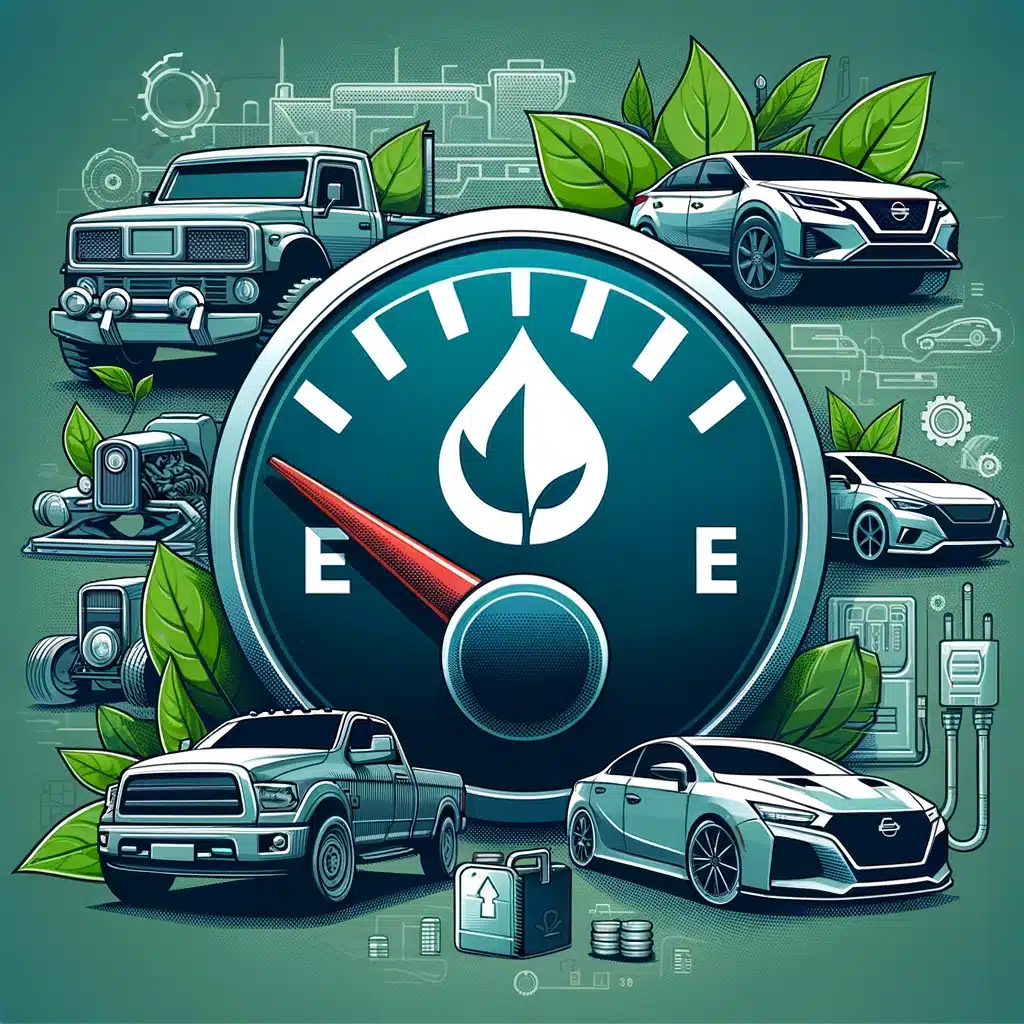
The Nissan VK56DE engine, while powerful, is also engineered with fuel economy in mind.
Fuel efficiency can vary based on the vehicle model and driving conditions. Here’s a snapshot of MPG ratings for models equipped with the VK56DE engine:
| Vehicle Model | Estimated MPG (City/Highway) |
|---|---|
| Nissan Titan | 13/18 |
| Nissan Armada | 12/18 |
| Infiniti QX56 | 14/20 |
Tips for Optimizing Fuel Efficiency
To enhance the fuel efficiency of your VK56DE engine, consider the following tips:
- Maintain Proper Tire Pressure: Incorrect tire pressure can reduce fuel economy.
- Regular Maintenance: Keep up with engine tune-ups and oil changes.
- Mindful Driving Habits: Accelerate gradually and avoid unnecessary idling.
- Weight Reduction: Remove excess weight from the vehicle to decrease fuel consumption.
By adhering to these practices, you can help improve the MPG ratings of your Nissan VK56DE-equipped vehicle and contribute to a greener driving experience.
Oil Requirements
Maintaining the lifeblood of the Nissan VK56DE engine means understanding and adhering to its specific oil requirements. The right type of oil ensures longevity and performance, while following proper maintenance intervals guarantees that your engine runs smoothly over the course of its life.
Recommended Oil Type for VK56DE
For the VK56DE engine, Nissan recommends using a high-quality SAE 5W-30 engine oil that meets or exceeds the standards set by the API. This viscosity ensures proper lubrication across various temperatures, maintaining the engine’s efficiency and performance. Synthetic oil is often preferred for its superior protective qualities and ability to withstand extreme conditions without degradation.
Oil Capacity and Change Intervals
The VK56DE has an oil capacity of approximately 6.9 quarts (6.5 liters) when replacing both the oil and filter. It’s crucial to adhere to Nissan’s recommended oil change intervals to ensure optimal engine health. For the VK56DE, changing the oil every 5,000 miles or six months is generally advised, whichever comes first.
However, this may vary depending on your driving habits and the conditions under which the vehicle operates.
How to Check and Replace Engine Oil
Checking and replacing the engine oil in the VK56DE is a straightforward process:
- Check Oil Level:
- Ensure the vehicle is on level ground and the engine is cold.
- Remove the dipstick, wipe it clean, reinsert it fully, and then remove it again to check the oil level.
- The oil level should be between the minimum and maximum marks.
- Replace Engine Oil:
- Start by draining the old oil from the oil pan and removing the old oil filter.
- Make sure to dispose of the old oil and filter properly.
- Install a new oil filter and pour in the correct amount of new oil.
- Run the engine for a few minutes and check for leaks.
- Recheck the oil level and adjust as necessary.
Regularly checking the oil level and changing the oil at the recommended intervals is key to maintaining the performance and longevity of your VK56DE engine.
Timing System
The timing system is a critical component of an engine’s operation, orchestrating the movement of valves and pistons in perfect harmony. The Nissan VK56DE engine utilizes a specific setup in its timing system, ensuring reliability and durability.
Timing Belt or Chain: VK56DE’s Approach
The VK56DE engine is equipped with a timing chain instead of a belt. Timing chains are known for their longevity and typically last the lifetime of the engine without the need for replacement. Here are some benefits of a timing chain over a belt:
- Durability: Less prone to wear and snapping compared to a belt.
- Maintenance: Generally requires less maintenance and no periodic replacement.
- Performance: Provides precise timing, which can improve engine efficiency and performance.
Interference vs. Non-Interference Configuration
Regarding valve-train design, engines can be categorized into interference and non-interference. The VK56DE is designed as an interference engine, meaning the space between the pistons and valves is minimal. This design allows for higher compression ratios and better performance. Still, it also means that if the timing chain fails, the pistons can collide with the valves, potentially causing significant engine damage.
Here’s a quick overview of the VK56DE’s timing system specifications:
| Feature | VK56DE Specification |
|---|---|
| Timing System Type | Chain-driven |
| Configuration | Interference |
| Maintenance Interval | Inspect periodically; replace as necessary |
Key Takeaways:
- The VK56DE uses a timing chain for its valve operation.
- It is an interference engine, which can offer greater performance at the potential risk of damage if the timing chain fails.
For more in-depth information and resources on the VK56DE engine’s timing system, consider consulting the following external sources:
By understanding the VK56DE’s timing system, owners can better appreciate the engineering behind their engine’s performance and ensure proper maintenance to prevent any timing-related issues.
Reliability and Maintenance
The Nissan VK56DE engine’s standing in the market is not just due to its performance but also because of its reputation for reliability and longevity. This engine’s robustness results from Nissan’s meticulous design and manufacturing processes, which aim to minimize the likelihood of mechanical failure and maximize the engine’s lifespan.
Engine Reliability and Longevity
The VK56DE is renowned for its durability, often reaching high mileage with proper care. Its construction features high-quality materials and advanced engineering techniques, contributing to its sturdy nature. Using an aluminum block and heads reduces weight and improves heat dissipation, while the chain-driven timing system avoids the common pitfall of belt replacement.
Common Maintenance Requirements
Regular maintenance is key to ensuring the VK56DE maintains its reliability. Here are the typical requirements:
- Oil Changes: Regular oil changes with the correct oil specification are crucial for keeping the engine components well-lubricated and functioning smoothly.
- Coolant Flushes: Periodic coolant flushes help maintain the cooling system, preventing overheating and potential engine damage.
- Air Filter Replacement: A clean air filter ensures optimal airflow to the engine, essential for maintaining fuel efficiency and power.
- Spark Plug Replacement: Keeping fresh spark plugs ensures efficient combustion, which is vital for engine performance and longevity.
- Timing Chain Inspection: While the timing chain is designed to last, inspection for potential wear is recommended, especially in high-mileage engines.
Preventive Measures and Best Practices
Preventive maintenance is the most effective way to extend the life of the VK56DE engine. Here are some best practices:
- Adhere to Service Schedules: Follow the manufacturer’s recommended service intervals to address potential issues before they become major problems.
- Use High-Quality Parts: Opt for OEM (Original Equipment Manufacturer) or equivalent-quality components when replacing parts.
- Monitor Engine Performance: Be attentive to changes in engine performance, such as unusual noises or vibrations, which could indicate underlying issues.
- Professional Inspections: Regular check-ups by a professional mechanic can catch issues that may not be obvious to the average owner.
- Driving Habits: Moderate driving habits can reduce wear and tear on the engine components, contributing to a longer engine life.
By following these guidelines and conducting regular maintenance, owners of vehicles equipped with the VK56DE engine can enjoy a reliable driving experience over many miles. The key to longevity combines vigilant care, immediate attention to repairs, and a commitment to using quality parts and fluids.
Common Engine Problems

While the Nissan VK56DE engine is renowned for its durability and performance, it is not immune to issues like any mechanical system. Understanding common problems and their symptoms can lead to quicker diagnostics and repairs, maintaining the engine’s integrity over time.
Known Issues with the Nissan VK56DE Engine
Several issues have been documented by both owners and mechanics, which can affect the VK56DE engine’s performance:
- Exhaust Manifold Leaks: Cracks can develop in the exhaust manifold, leading to leaks that may cause a ticking noise, especially when the engine is cold.
- Timing Chain Wear: Although designed to be durable, the timing chain guides and tensioners can wear prematurely, which may result in a whining noise from the front of the engine.
- Faulty Fuel Injectors: Injectors can become clogged or fail, leading to poor engine performance and misfires.
Troubleshooting Common Problems
When encountering issues with the VK56DE, a systematic approach to troubleshooting can identify the root cause:
| Symptom | Potential Issue | Troubleshooting Step |
|---|---|---|
| Ticking noise | Exhaust manifold leak | Inspect manifold for cracks |
| Whining noise | Timing chain wear | Check chain tension and guides |
| Misfires | Faulty fuel injectors | Diagnose with a fuel pressure test and injector signal test |
Expert Tips for Problem Prevention
Preventing common issues from arising often comes down to regular maintenance and being proactive:
- Regular Inspections: Periodically check critical components such as the exhaust manifold and timing chain for signs of wear or damage.
- Quality Fuel: High-quality fuel minimizes injector clogging and ensures optimal engine performance.
- Timely Repairs: Addressing small problems promptly can prevent them from escalating into more significant issues.
- Engine Cleaning: Periodic engine cleaning can prevent buildup that may lead to clogged injectors or other issues.
- Listen to Your Engine: Be attuned to any unusual noises or changes in engine performance, as these can be early indicators of potential problems.
By staying vigilant and adhering to a strict maintenance schedule, the most common issues with the VK56DE can be mitigated or avoided altogether. A well-maintained VK56DE engine can deliver performance and reliability for many miles, embodying the essence of what Nissan engines are celebrated for.
Cooling and Filtration
The proper functioning of the cooling and filtration systems is vital for the health and efficiency of the Nissan VK56DE engine. Ensuring that these systems are well-maintained is key to prolonging the engine’s life and maintaining its performance.
The engine coolant plays an indispensable role in managing the operating temperature of the VK56DE engine, preventing it from overheating, which can lead to severe damage. Here are the specifications and maintenance tips for the engine coolant:
- Coolant Type: Use only the Nissan Long Life Antifreeze/Coolant or equivalent in quality.
- Service Interval: Typically, coolant should be replaced every 60,000 miles or 5 years, whichever comes first.
- Checking Coolant Level: Ensure the engine is cool before checking the coolant level in the reservoir. The level should be between the “MIN” and “MAX” lines.
- System Flush: Performing a coolant system flush at the recommended intervals helps remove rust and scale deposits and replenish the corrosion inhibitors.
Engine Air Filter: Selection and Replacement
The engine air filter is responsible for delivering clean air to the engine, which is crucial for maintaining optimal combustion and engine efficiency. Here are the key points for selection and replacement:
- Filter Type: Using a genuine Nissan air filter or a reputable aftermarket brand that meets OEM specifications is recommended.
- Replacement Interval: The air filter should be inspected regularly and replaced approximately every 15,000 miles. However, driving in dusty or polluted conditions may require more frequent changes.
- Installation: Make sure the filter is properly seated in the housing and that the housing is securely closed to prevent unfiltered air from entering the engine.
Ensure your VK56DE engine runs smoothly and efficiently by adhering to coolant specifications and air filter maintenance guidelines, avoiding contamination risks and overheating.
Spark Plugs
The ignition system of the Nissan VK56DE engine relies heavily on the quality and condition of its spark plugs. These plugs are the stalwarts that ignite the air/fuel mixture, thus powering the engine. Choosing the right spark plugs, setting them correctly, and maintaining them on schedule is fundamental to the engine’s performance and longevity.
When selecting spark plugs for the VK56DE engine, there are several factors to consider:
- Material: The VK56DE performs optimally with iridium or platinum spark plugs due to their durability and ability to withstand high temperatures.
- Heat Range: The correct heat range for spark plugs is crucial; it must be matched to the engine’s operating conditions to prevent fouling or pre-ignition.
- Manufacturer Specifications: Always refer to the Nissan service manual for the recommended spark plug types and part numbers to ensure compatibility and optimal performance.
Spark Plug Gap Settings and Maintenance Schedule
Proper gapping of the spark plugs is essential for efficient combustion. For the VK56DE engine, the spark plug gap should typically be set between 0.039 and 0.043 inches (0.99 – 1.09 mm), unless specified otherwise by the manufacturer for specific models or conditions.
The maintenance schedule for spark plugs can vary based on the type of plug and the vehicle’s usage:
- Iridium/Platinum Plugs: These higher-quality plugs can last up to 100,000 miles before needing replacement.
- Regular Inspection: It is a good practice to inspect your spark plugs every 30,000 miles to assess their condition and clean or adjust the gap as necessary.
Consistent maintenance and timely replacement of spark plugs ensure that the VK56DE engine maintains its firing efficiency, which in turn supports overall engine health, fuel economy, and emission control. Regular checks and adherence to a strict maintenance schedule will keep the engine’s spark fresh and its performance stellar.
Upgrades and Modifications
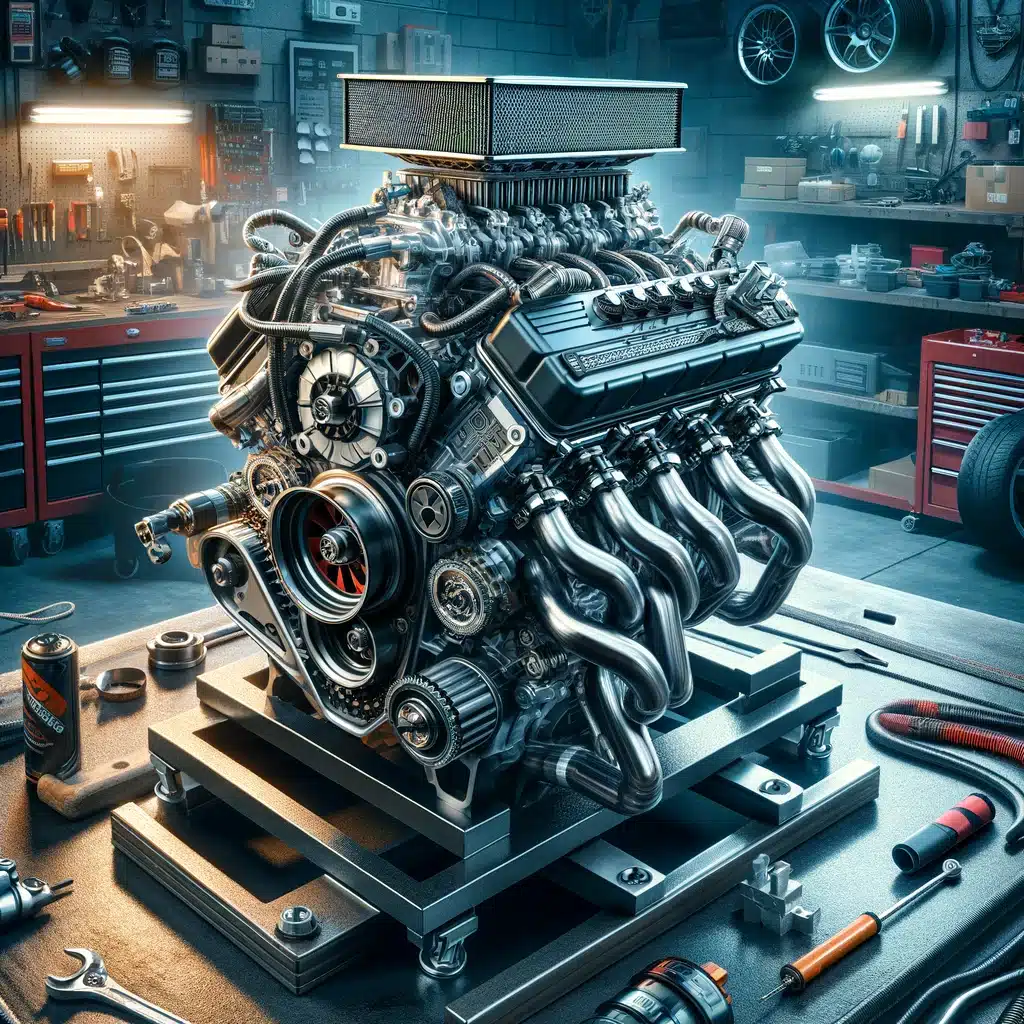
Enthusiasts of the Nissan VK56DE engine often seek to enhance its performance and aesthetics through strategic upgrades and modifications. The aftermarket community provides a plethora of options to elevate the engine’s capabilities beyond its stock condition.
Owners of vehicles equipped with the VK56DE have a wide range of upgrade options to choose from. Here’s a list of popular modifications:
- Cold Air Intake Systems: To increase horsepower and torque by improving the engine’s breathing efficiency.
- Performance Exhaust Systems: For better exhaust flow and an aggressive sound.
- ECU Tuning/Chip Tuning: To optimize the engine’s performance by adjusting the fuel and ignition curves.
- High-Flow Catalytic Converters: To reduce back pressure and enhance exhaust flow, potentially increasing power.
- Performance Camshafts: To improve valve timing, offering gains in power across the rpm range.
- Upgraded Fuel Injectors: For improved fuel delivery, especially important when aiming for higher power outputs.
- Forced Induction Systems: Such as superchargers or turbochargers, for a significant boost in power.
Aftermarket Support and Resources
The table below highlights key resources for VK56DE owners looking to modify their engines:
| Resource Type | Description | Examples |
|---|---|---|
| Online Forums | Communities for sharing knowledge and experiences. | TitanTalk, ClubArmada |
| Part Retailers | Suppliers of aftermarket parts and upgrade components. | Summit Racing, Jegs |
| Tuning Shops | Specialist services for custom tuning and installations. | AMS Performance, Stillen |
| DIY Guides | Manuals and videos for those who prefer to self-install. | YouTube tutorials, Haynes Manuals |
Key Considerations:
- Compatibility: Ensure all modifications are compatible with the VK56DE engine.
- Quality: Opt for high-quality parts from reputable manufacturers.
- Professional Installation: Some upgrades may require professional installation and tuning.
- Warranty: Remember that certain modifications may affect your vehicle’s warranty.
- Regulations: Always check local regulations to ensure modifications are legal.
By taking advantage of the rich aftermarket support and considering these best practices, you can transform your VK56DE into an even more formidable powerplant. With the right upgrades, this already robust engine can reach new heights of performance and efficiency.
FAQs
Q1: What vehicles are equipped with the VK56DE engine?
- A: The VK56DE engine is found in a range of Nissan and Infiniti vehicles, including the Nissan Titan, Armada, Pathfinder Armada, and the Infiniti QX56.
Q2: Is the VK56DE engine reliable?
- A: Yes, with proper maintenance, the VK56DE is known for its reliability and can achieve high mileage without major issues.
Q3: What is the fuel economy of the VK56DE engine?
- A: Fuel economy can vary depending on the vehicle and driving conditions, but on average, vehicles with this engine achieve between 12 to 18 miles per gallon.
Q4: Does the VK56DE require premium gasoline?
- A: While the VK56DE can run on regular unleaded gasoline, premium fuel is recommended for optimal performance, especially in vehicles tuned for higher power output.
Q5: What type of oil should be used in the VK56DE?
- A: Nissan recommends using SAE 5W-30 engine oil that meets or exceeds API standards.
Q6: How often should the oil be changed in a VK56DE engine?
- A: It’s generally recommended to change the oil every 5,000 miles or 6 months, whichever comes first, although this can vary based on driving habits and conditions.
Q7: What are common problems with the VK56DE engine?
- A: Common issues include exhaust manifold leaks, timing chain wear, and occasionally, faulty fuel injectors.
Q8: Are there any aftermarket upgrades available for the VK56DE?
- A: Yes, there’s a wide range of aftermarket upgrades available, including cold air intakes, performance exhausts, ECU tuning, and more.
Q9: Can the VK56DE engine be supercharged or turbocharged?
- A: While not commonly supercharged or turbocharged due to its already substantial power, aftermarket kits are available for those seeking to boost the engine’s performance.
Q10: How can I ensure the longevity of my VK56DE engine?
- A: Regular maintenance, using quality parts and fluids, and addressing any issues promptly are key to ensuring the longevity of the VK56DE engine.
Comparative Analysis with Competing Engines
When evaluating the VK56DE, comparing it with other engines in its class is insightful. Below is a comparative analysis that looks at several key aspects:
- Power Output: Compared to engines like the Ford 5.4L Triton V8 or the Chevrolet 5.3L EcoTec3 V8, the VK56DE offers competitive horsepower and torque figures, often surpassing its rivals in raw performance.
- Fuel Efficiency: While not the most fuel-efficient in its class, the VK56DE balances power and economy, outperforming some larger displacement competitors.
- Reliability: Nissan’s VK56DE is renowned for its reliability, frequently matching or exceeding the longevity of similar engines like Toyota’s 5.7L 3UR-FE V8.
- Aftermarket Support: The VK56DE enjoys robust aftermarket support, on par with its American counterparts, allowing for extensive customization and enhancement.

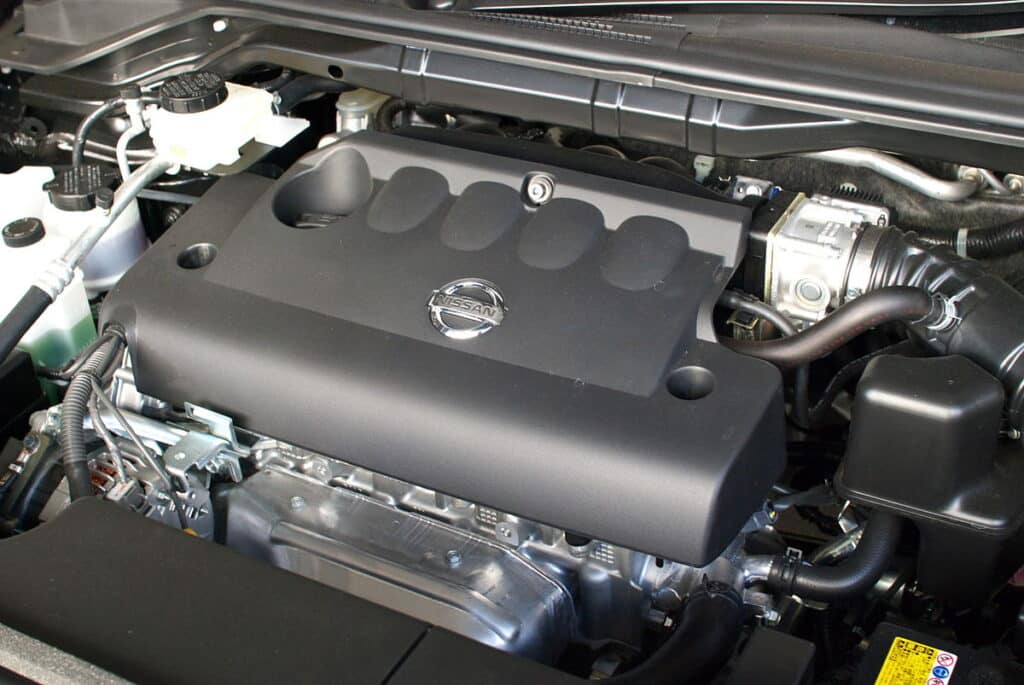
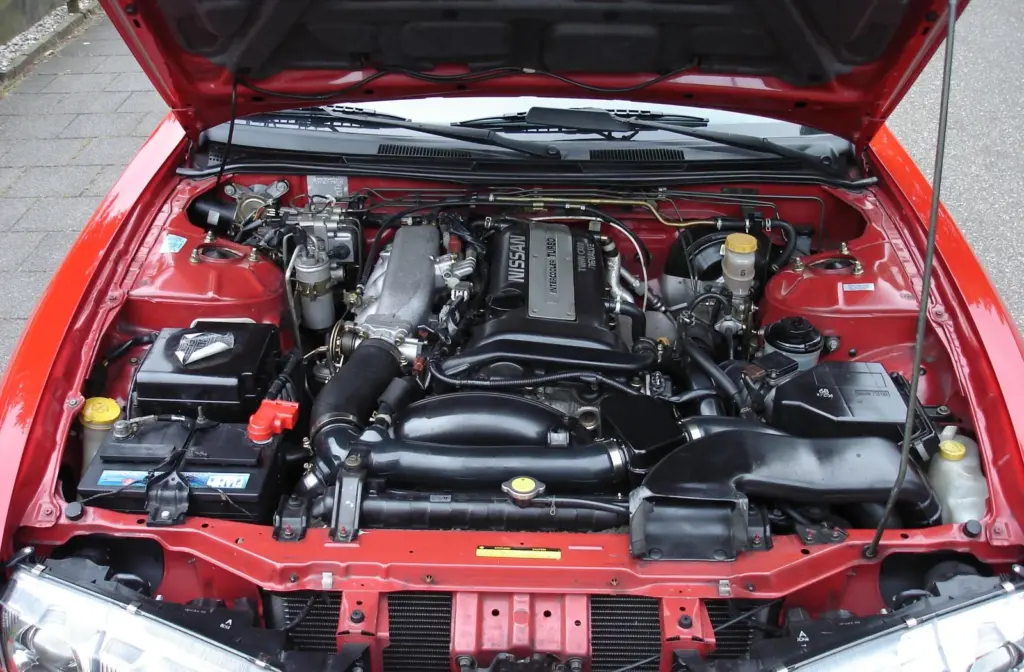
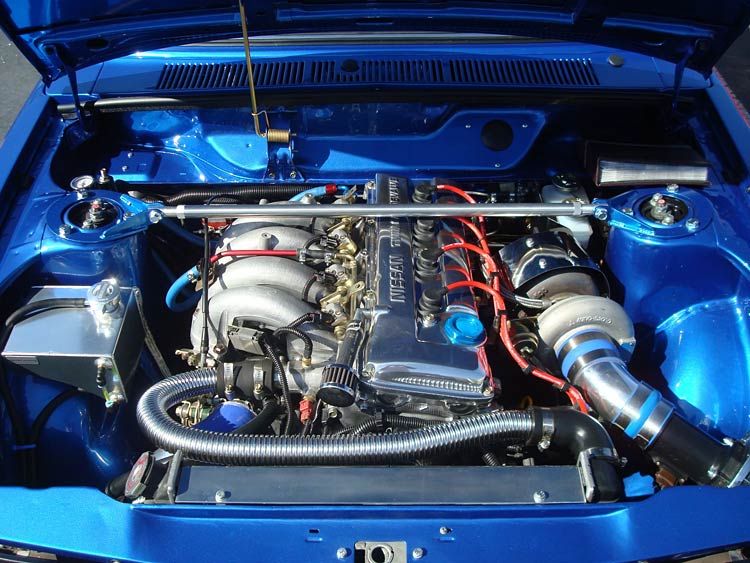
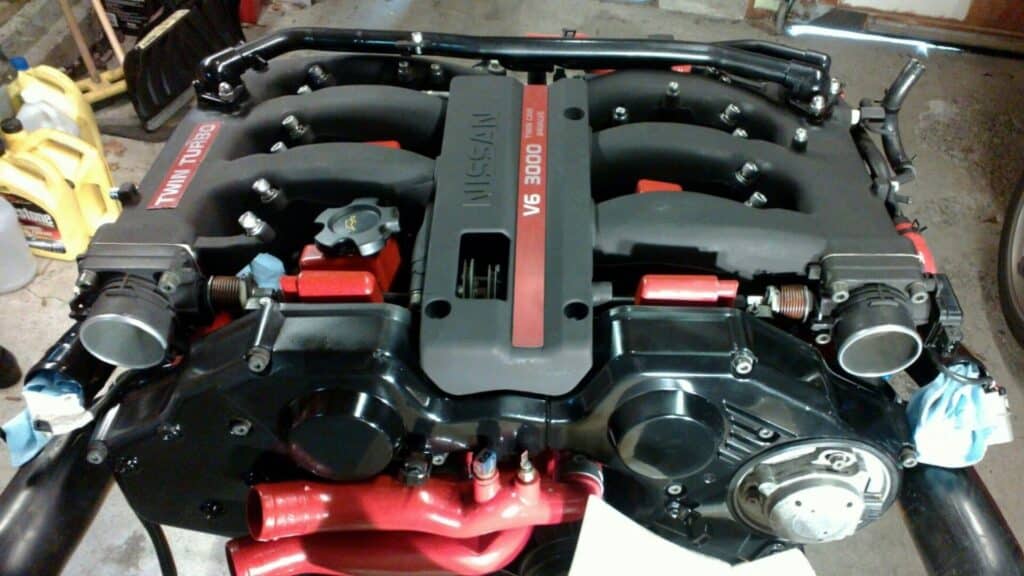
Hello dan
1-I just wanna ask about the overall reliability of VK56DE on Nissan patrol y62 model 2015 currently on 197000 km and is there any particular item should I replace other than dealer major service.
2- I have little issue when I start the engine when I start the engine it’s start and then directly shout down by it self, any hint from your side ??
Thank you in advance.
Hello, Sul.
1) It’s not that bad. Just use only high quality fuel and do the timely oil change.
2) Get the following things checked:
– If the spark plugs are firing well. Please check this for each and every spark plug. Clean the plugs, check for corrosion on ignition points of the coil etc.
– If the Idle Air Controller (IAC) valve is not stuck in the throttle body – In fact, while the car is in Idle, pull out the IAC connector from the throttle body and immediately the RPMs will drop to almost 550-600. Connect it back and the RPMs will raise and settle to 850-950.
– If there is enough pressure from the Fuel pump sending fuel from the Tank into the engine chamber, clogged fuel filter too!
Thank you for your reply dan
1-I used 98 fuel since I bought it in 2015. But can cleaning the throttle body will help resolve the issue of engine cutoff ?
2- And in term of reliability of the engine how many km I can reach with the engine. It is reliable??
Check your plugs and Air Controller and only then the throttle body cleaning might be needed.
In general, this engine is affordable and reliable. The resource of these engines is huge. Mostly they die from untimely service or bad oil. You should not have any serious problems up to 350,000 km.
Hey Dan,
On the VK56DE engine you mention catalytic converters dusting out the engine. How does that happen exactly. The picture in my head says the converters are down stream with no route back for debris.
Thanks,
Sam
I have an 05 Frontier XE with 2.5L and started with Amsoil but later switched to Royal Purple and follow a 8-10,000 mile drain interval and have 240,000 miles. Have replaced transmission( YOU MUST USE NISSAS ATF!!!)AC, Alternator.